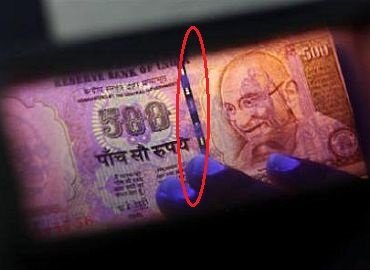As many as 80,000 defective Rs 500 notes and 10,000 defective Rs1,000 notes produced by a paper mill in Hoshangabad, Madhya Pradesh, have hit the market.
Needless to say, there is panic among the public.
The notes aren’t counterfeit, but genuine. They are just defective.
What’s wrong with the notes?
The most distinguishing feature in an Indian currency note to check if it’s counterfeit is the presence of the magnetic thread, which have inscriptions ‘Bharat’ and ‘RBI’. Well, these inscriptions are missing in these notes.

This paper mill was part of ‘Make in India’
The notes were produced by Security Paper Mill (SPM)’s new bank-note paper line (NBNPL) in Hoshangabad. The unit was only recently inaugurated by finance minister Arun Jaitley, who called it symbolic to the government’s ‘Make In India’ initiative. He had said the unit would ensure high-denomination notes are printed on locally-made paper.
The unit can produce 6000 MT paper for printing currency notes of Rs 10, Rs 20, Rs 50, Rs 100, Rs 500 and Rs 1000 denominations.
Meanwhile, a shocked RBI has asked banks to replace all the defected notes
Did you know?
It was several decades ago that Hoshangabad was chosen as the centre for producing paper for printing currency by Morarji Desai, who was the then Finance Minister and later became the Prime Minister.
(Featured image: Reuters)

















